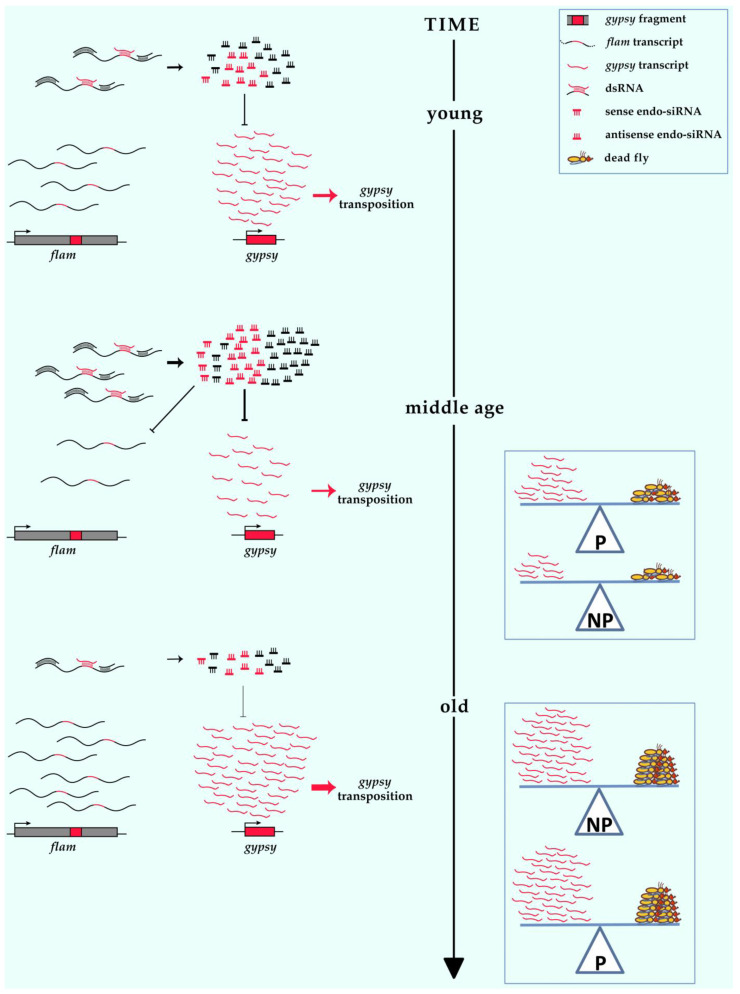Figure 3.
A speculative model for gypsy regulation during the aging process. flamenco is highly enriched in antisense TE sequences, comprising gypsy fragments. The flamenco primary transcript can form double strand RNAs (dsRNAs) with gypsy sense transcripts that serve as substrates for the production of endo-siRNAs specific for the silencing of gypsy. In young flies, gypsy expression level depends on its transcriptional rate and on post-transcriptional silencing induced by specific endo-siRNAs (gypsy-antisense). In middle age, reduction in gypsy and flamenco expression can be explained by an increased production of endo-siRNAs (sense and antisense) specific for the silencing of gypsy and gypsy fragments that are part of the flamenco transcript (cosuppression). In old flies, gypsy and flamenco appeared derepressed, and this can be explained by a reduction of silencing, probably due to a reduction in the amount of endo-siRNAs (sense and antisense). Similar mechanisms can be hypothesized to explain down- and up- regulation of ZAM and Idefix in aging. Right boxes: a legend is represented in the upper box; correlation between the abundance of gypsy transcription and mortality in P(permissive) and NP (non-permissive) flies in middle aged individuals (middle age box) and old individuals (old box).

